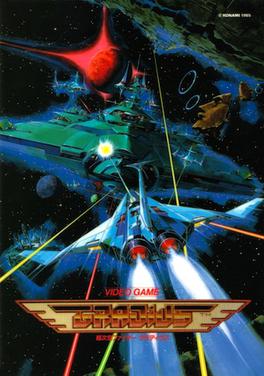
Gradius is a side-scrolling shooter video game developed and published by Konami. The first game in the Gradius series, it was originally released as a coin-operated arcade game in 1985. The player maneuvers a spacecraft known as the Vic Viper that must defend itself from the various alien enemies. The game uses a power-up system called the "power meter", based upon collecting capsules to purchase additional weapons.

1942 is a vertically scrolling shooter by Capcom that was released as an arcade video game in 1984. Designed by Yoshiki Okamoto, it was the first game in the 194X series, and was followed by 1943: The Battle of Midway.

1943: The Battle of Midway is a 1987 vertically scrolling shooter arcade video game developed and published by Capcom.

Kung-Fu Master, known as Spartan X in Japan, is a side-scrolling beat 'em up developed by Irem as an arcade video game in 1984, and distributed by Data East in North America. Designed by Takashi Nishiyama, the game was based on Hong Kong martial arts films. It is a loose adaptation of the Jackie Chan, Sammo Hung, and Yuen Biao film Wheels on Meals (1984), called Spartan X in Japan, with the protagonist Thomas named after Jackie Chan's character in the film. The game is also heavily inspired by the Bruce Lee film Game of Death (1972), which was the basis for the game's concept. Nishiyama, who had previously designed the side-scrolling shooter Moon Patrol (1982), combined fighting elements with a shoot 'em up gameplay rhythm. Irem and Data East exported the game to the West without the Spartan X license.
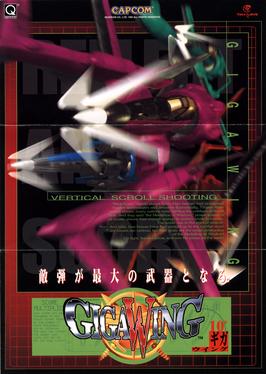
Giga Wing is a 1999 vertically scrolling shooter arcade game developed by Takumi Corporation and published by Capcom on their CPS-2 arcade system board and ported later that year to the Dreamcast console. The arcade version is notable for using a horizontally aligned monitor, something that is considered rare for a vertical shooter. The Dreamcast version had been scheduled to be released in the U.S. in April 2000, before it was delayed to July 18, 2000.

19XX: The War Against Destiny is a vertical scrolling shooter arcade game released by Capcom in 1995. The story takes place before a fictional 20th century war as a lone pilot tries to defeat an entire army and evil organization from starting another World War, which soon escalates to a nuclear apocalypse.

Progear is a 2001 horizontally scrolling bullet hell arcade video game developed by CAVE and published by Capcom for the CP System II board. Set in the fictional kingdom of Parts, players assume the role of children controlling a plane equipped with the titular propelling engine to overthrow the Metoruin sages and their new world order. It was the sixth shoot 'em up game from CAVE, their first horizontally oriented shooter, and their eighth video game overall.
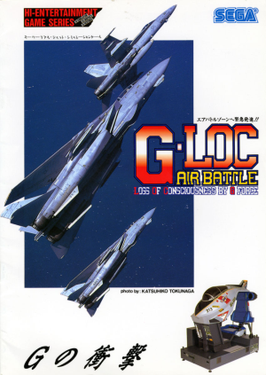
G-LOC: Air Battle is a 1990 combat flight simulator arcade video game developed and published by Sega. It is a spin-off of the company's After Burner series. The title refers to "G-force induced Loss Of Consciousness". The game is known for its use of the R360 motion simulator arcade cabinet. The arcade game was a commercial and critical success upon release.

SonSon is an arcade video game by Capcom released in July 1984. It is loosely based on the Chinese novel Journey to the West. The player assumes the role of a monkey boy and fights their way from one side to another, eventually reaching the statue of Buddha. One battles bats, rats, and mad bombers along the way with his fighting rod that shoots balls of fire.

Mega Man 2: The Power Fighters is a fighting game in the Mega Man series released as an arcade video game in Japan in 1996. It is the direct sequel to Mega Man: The Power Battle released the previous year. Both games were ported to home consoles in North America in 2004 as part of the Mega Man Anniversary Collection for PlayStation 2, Xbox, and GameCube and in Japan during the same year as part of two game compilation titled Rockman: Power Battle Fighters, also for the PlayStation 2. An adaptation of both games for the Neo Geo Pocket Color, titled Rockman Battle & Fighters, was also made. Both games were later re-released as part of the Capcom Arcade 2nd Stadium compilation in 2022.
Strikers 1945 III also known as Strikers 1999 (ストライカーズ1999), is a vertically scrolling shoot 'em up game developed and originally released by Psikyo in 1999 for the arcades. The game is a sequel to Strikers 1945 II, chronologically taking place 54 years after the first two games in the series.

Forgotten Worlds, titled Lost Worlds in Japan, is a side-scrolling shooter video game by Capcom, originally released as a coin-operated arcade game in 1988. It is notable for being the first title released by Capcom for their CP System arcade game hardware.
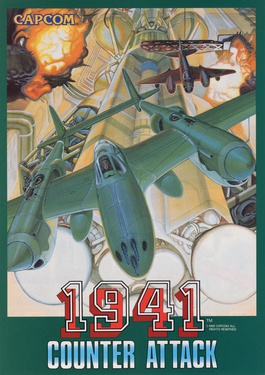
1941: Counter Attack is a vertical scrolling shooter arcade game by Capcom, released in February 1990. It is the prequel to 1942, and the third game in the 19XX series. It was ported to the SuperGrafx in 1991 and to GameTap. It was released on Capcom Classics Collection Remixed for the PlayStation Portable and Capcom Classics Collection Vol. 2 for PlayStation 2 and Xbox. It was followed by 19XX: The War Against Destiny in 1996.

Armored Warriors, known in Japan as Powered Gear - Strategic Variant Armor Equipment, is a 1994 mecha-themed beat-em-up game released by Capcom as a coin-operated video game for their CP System II hardware. The "Variant Armors" mecha featured in the game were later used for the head-to-head fighting game Cyberbots: Full Metal Madness. After being included with the Retro-Bit Super Retro-Cade dedicated console, the game would later be released digitally as part of the Capcom Beat 'Em Up Bundle on September 18, 2018, for the Nintendo Switch, PlayStation 4, Xbox One, and Windows. and Capcom Arcade Stadium on February 17, 2021, for the Nintendo Switch, an later that year on PlayStation 4, Xbox One and Steam.

DoDonPachi II: Bee Storm is a vertically scrolling bullet hell shoot 'em up developed by International Games System (IGS) and published by Capcom in 2001.
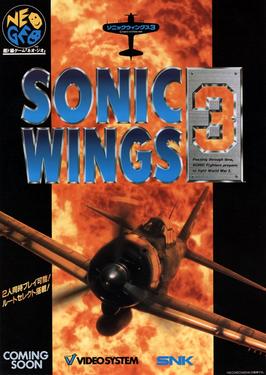
Aero Fighters 3, known as Sonic Wings 3 in Japan and Europe, is a vertical-scrolling shoot 'em up arcade game released in 1995 by Video System. The Neo Geo AES version was not released in North America, but the Neo Geo MVS and Neo Geo CD versions were released in North America. The game was later released for Nintendo Switch in 2018 by the eventual copyright holder for the game, Hamster Corporation.
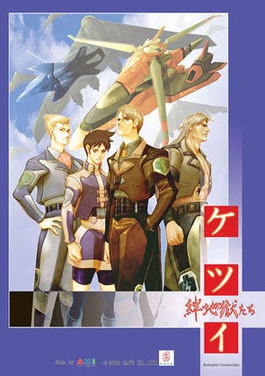
Ketsui: Kizuna Jigoku Tachi is a vertical shoot 'em up arcade game by Cave. It was released in Japanese arcades in 2003. A Nintendo DS boss rush version was released on October 23, 2008 in Japan. It included a Superplay DVD featuring a world record scoring run by a top ranked player. The arcade game was ported to the Xbox 360 and released in 2010. A special version of Dodonpachi Daifukkatsu Black Label was released on the Xbox 360 in 2011, which is a crossover with Ketsui, featuring the ship, re-arranged music and scoring system from Ketsui on top of the Dodonpachi Daifukkatsu Black Label scoring system.

Varth: Operation Thunderstorm is an arcade game in the vertical scrolling shooter genre, published by Capcom in 1992. The game did not see a console port following its initial release, but 14 years later Digital Eclipse Software would port the game onto the PSP handheld, and later onto the PlayStation 2 and Xbox.

Captain Commando is a 1991 futuristic side-scrolling beat 'em up originally developed and published by Capcom as an arcade video game, and later ported to several other platforms. It was the seventeenth game produced for the company's CP System hardware. The game stars the titular superhero who was originally conceived as a fictional spokesman used by Capcom USA in the company's console games during the late 1980s. On September 13, 2018, Capcom announced Capcom Beat 'Em Up Bundle with Captain Commando being one of seven titles and released digitally for Nintendo Switch, PlayStation 4, Xbox One, and Windows on September 18, 2018.

Capcom Arcade Stadium is an arcade video game compilation by Capcom. It includes 32 arcade games originally published by Capcom between 1984 and 2001. The compilation was initially released on Nintendo Switch in February 2021, then on PlayStation 4, Windows, and Xbox One in May 2021, and Amazon Luna in May 2022.



















